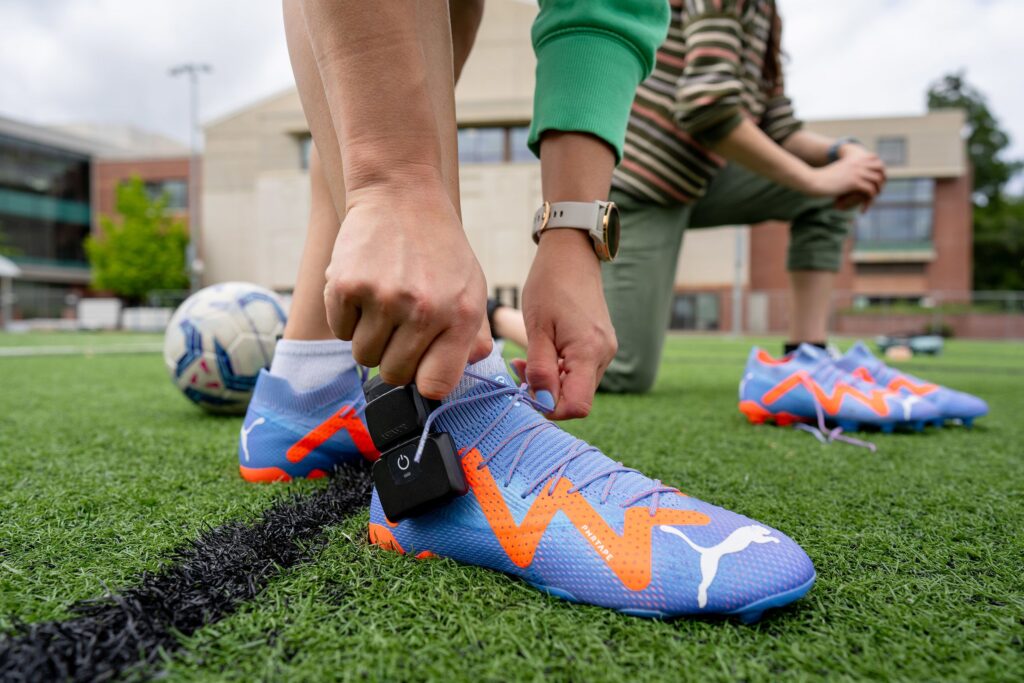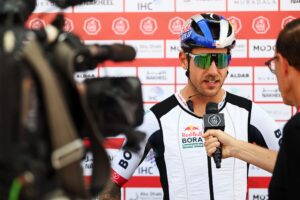
In a groundbreaking effort to reduce injuries among female athletes, researchers at the University of Oregon have teamed up with global sports brand Puma to develop a soccer shoe prototype specifically designed to lower the risk of ACL injuries in women. This initiative addresses a critical gap in sports equipment, which has historically been designed with male athletes in mind, often increasing the injury risk for female players.
Female soccer players face a significantly higher risk of ACL tears compared to their male counterparts, with studies indicating a two to three times greater likelihood of such injuries. Much of this risk is attributed to physiological and biomechanical differences, compounded by the use of cleats that are primarily designed for men. The standard cleats available on the market can exacerbate injury risks due to their design, which often fails to accommodate the unique biomechanics of female athletes.
Research and Development Collaboration
For the past seven years, Professor Mike Hahn and his team at the University of Oregon have been delving into the biomechanics of female soccer players. Their research aims to identify and mitigate the factors contributing to the heightened injury risk. The collaboration with Puma marks a significant step forward in translating these research findings into practical solutions.
“We’re very excited to work so closely with a globally recognized soccer brand like Puma. It is rare to have such a productive collaboration between university researchers and an innovation team in industry,” said Mike Hahn, UO professor of human physiology.
The partnership with Puma emerged after the company’s interest was piqued by the lab’s findings presented at the Footwear Biomechanics Symposium in Osaka, Japan. Puma’s involvement has enabled the development of a research-backed soccer shoe prototype, with a product launch anticipated soon.
From Lab to Field
The ACL, a crucial ligament in the knee, is under significant stress during soccer games, particularly during sudden directional changes. Women’s biomechanics place different strains on their muscles and ligaments compared to men, which can lead to increased injury risks. Cleats designed for men often provide excessive traction, which can be detrimental when the foot remains fixed while the body continues to move, increasing joint and ligament strain.
The research conducted at the UO’s Bowerman Sports Science Center has been pivotal. Initial anecdotal evidence has been supplemented with hard data, identifying factors such as stud shape, length, and positioning that could make cleats more suitable for female athletes. The collaboration with Puma has seen the development and testing of two prototype cleats: a “mild” version with subtle design changes and a “wild” version with more substantial modifications.
Testing revealed that optimal performance was achieved with a design somewhere between the two prototypes, leading to the creation of a third version for field testing.
Real-World Testing and Future Implications
While initial testing has been conducted in controlled laboratory settings using advanced tools like force plates and motion-capture cameras, the true test lies in real-world conditions. The next phase involves validating the new cleat design against existing commercial shoes on the UO turf fields. This on-field testing will inform the final design, which is expected to be available to consumers soon.
The implications of this research extend beyond soccer. The Wu Tsai Human Performance Alliance, of which the University of Oregon is a founding partner, aims to optimize human performance and innovate in human health. This $220 million global initiative supports research across various disciplines, including bioengineering and sports product design, focusing on injury prevention and recovery.
“The real value of this work has been in the relationships formed between the research and development teams,” Hahn noted. “Now that we have established that we work well together and can quickly iterate on development and testing, it’s exciting to think about the impact we can have as we continue to partner on future projects.”
As the sports industry increasingly recognizes the need for gender-specific equipment, this collaboration between academia and industry could set a precedent for future innovations, potentially transforming the landscape of sports products and enhancing athlete safety worldwide.







